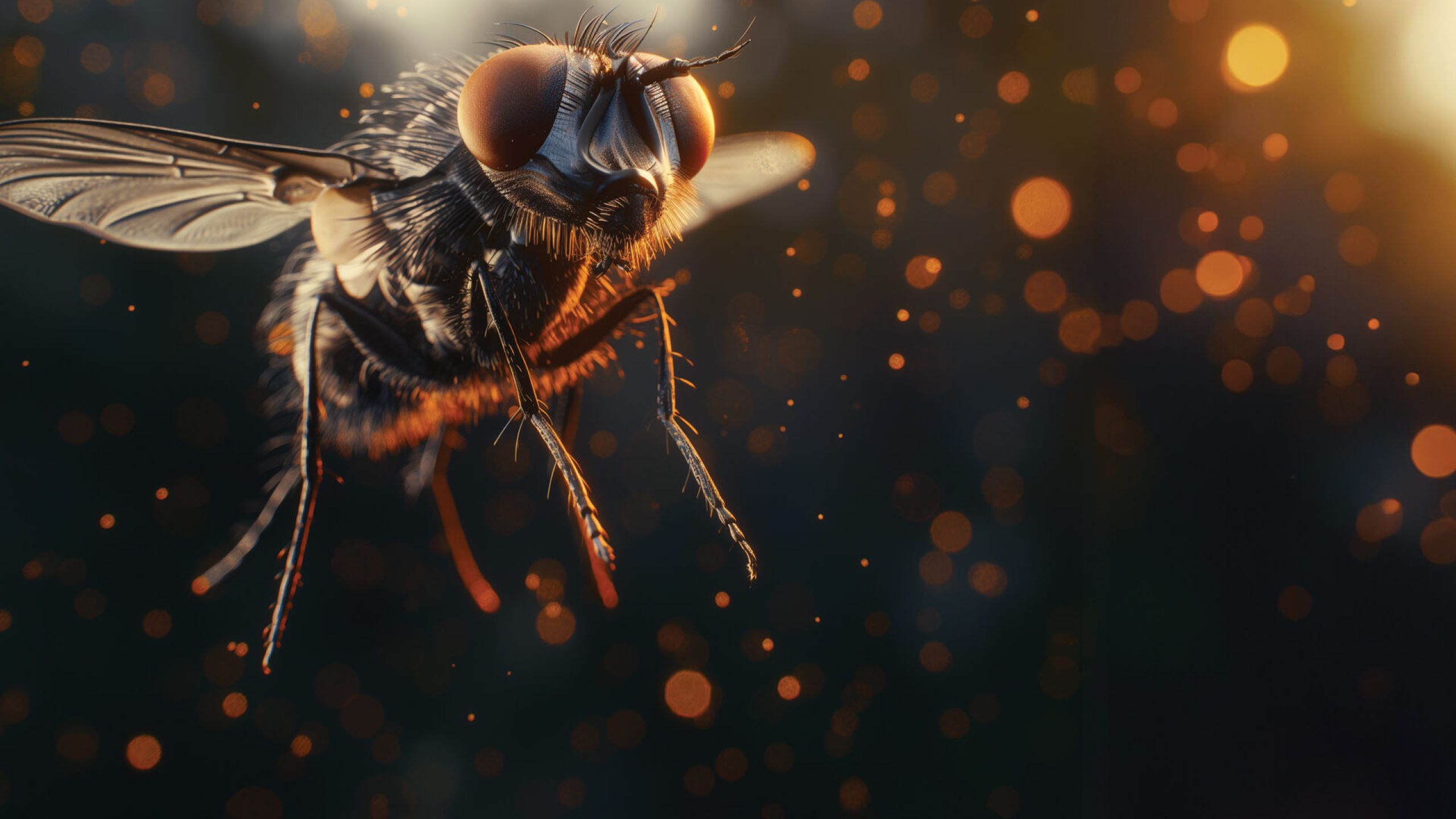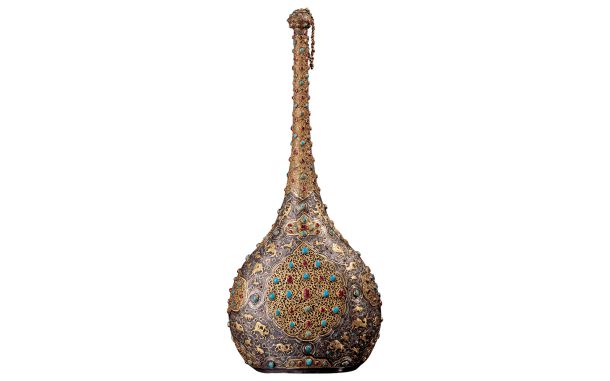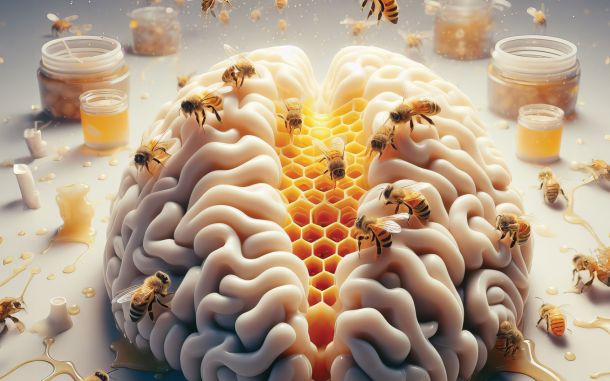The Wing of a Fly

In This Article
-
In order for a fly to exist, to continue its existence, to protect itself, to feed itself, etc., it must be equipped with many unique qualities. For these qualities to exist, it is necessary to make choices with very sensitive calculations among many possibilities.
-
In order for its wings to be suitable for the environment in which the fly lives, it should not be affected by different climatic conditions.
"O humankind! A parable is struck, so pay heed to it: Those whom, apart from God, you deify and invoke will never be able to create even a fly, even if all of them were to come together to do so..." (all-Hajj 22:73).
When we look at the living world with a contemplative eye and love of knowledge, we can see the presence of remarkable talents different species manifest in their own way. Compared to many of our technological inventions produced by human mind and thousands of years of knowledge and research since the beginning of history, the living beings we see in nature are much more perfect, aesthetically, and ergonomically more useful, more abundant, and much cheaper.
To give a few examples: The design of a dolphin’s snout, which allows it to move easily in the water, is better than the design of the bows of the ships made by humans, which allow them to move freely in the water. The design of a seagull's wing, which allows it to maneuver in the air, is better than the design of the wing of a fighter jet made by humans. How is it possible to think that a seagull wing came into being by chance, while no one thinks that an airplane wing came into being by chance or by itself?
Now let's look at a fly, which is one of the millions of living species that exist in the world and which many of us dislike. Let’s consider whether the collective efforts of millions of conscious individuals on Earth could result in the creation of a fly.
In order for a fly to exist, to continue its existence, to protect itself, to feed itself, etc., it must be equipped with many unique qualities. For these qualities to exist, it is necessary to make choices with very sensitive calculations among many possibilities.
A fly flaps its wings an average of 250 times per second. This is not a circular motion, but a back and forth, like a piston. Chitin, which is used in the structure of the wings, is a specially selected, very light, flexible, and durable material. The joints that connect the wings to the body must also be designed very specially. The fact that a motionless fly can suddenly jump out of its place and make very sharp turns requires that its body have an anatomy suitable for such movements. The pistons employed in gasoline engines reciprocate in a back-and-forth motion. Despite the extensive efforts of thousands of engineers spanning over a century, these engines are limited to pistons oscillating at a rate of only 100 times per second. Does it make sense to credit the fly for all these skills?
The fly's wing has a very special design that allows it to maneuver. The surface of the wing frame consists of chitin rods that provide the tension of the flexible wing and prevent it from wrinkling and bending; it is also covered with a flexible membrane. Unlike vertebrates, insects do not have red blood and vascular systems to carry it. Hemolymph fluid circulates through the cavities of the body. The tracheal tubules, which constitute the respiratory system, carry oxygen and carbon dioxide to all tissues that need it. The trachea network system, which was established for the regular delivery of nutrients to living cells and the collection of waste, is placed in all tissues in a way that can be prepared with very advanced mathematical equations, leaving no cell behind. Who made these optimizations? Did it occur on its own?
In order for its wings to be suitable for the environment in which the fly lives, it should not be affected by different climatic conditions, should not disperse in the rain, should not be worn out due to the acidity or basicity of the food taken by the fly as food, and should be of an ideal size according to the power of its heart. Well, the fly; does he know that his wing has these features?
When our homes are built, the plumbing is laid and the diameter of the pipes does not change, that is, the water pipes do not have the ability to expand or contract according to our needs. It remains the way it was done in the beginning. However, the tracheal tubes, which are spread like a net inside the fly, and the thinner tracheal tubes branching from them, are constantly changing according to the needs of the fly; they expand and shrink.
It is beyond comprehension how the sensitive chitin hairs on its skin transmit even the slightest breeze in the air to the brain; that its tiny five-chambered heart pumps body fluid from back to front at a terrific speed, and that its Malpighi's tubes do the same job as our kidneys and clean nitrogenous substances produced as toxic waste from the same liquid. As the number of studies on the physiology, anatomy, and biochemistry of the fly increases, we continue to discover new things every day.
Another point to contemplate about the fly is that the material to be used in its construction should be ecofriendly. If the fly is going to live for a month, then the organic material to be used in it should break down very soon after it dies leaving no waste and pollution behind.
The excellent properties of the fly are too many to count. The feeding of a fly is a miracle in itself. It secretes digestive enzymes from its mouth to dissolve and break down the bacteria which it later absorbs; this explains the wisdom why flies are found around droppings.
The fly’s mechanical design, its self-defense mechanisms, how it procreates, the fact that it has hundreds of tools given to perceive its environment, its vision made possible with a few thousand eyes (ommatidium) like a bee comb, its metamorphosis and transformation into a maggot and then a fly, and its contributions to the environment – each uniquely feature that the fly requires a separate expertise.
As the sciences continue to develop day by day, we realize we can only understand a small part of existence. Despite the diligent efforts of countless scholars spanning centuries, the vast expanse of knowledge remains unattained to humanity, as God’s knowledge is infinite.
Saying that a fly could not exist if its wing was not flexible does not explain the fact that a fly's wing is flexible. If a fly's wing wasn't flexible, then the fly would not exist in the first place. A design shows a designer behind it. An engineering work shows an engineer behind it. A quantity measured denotes someone does the measuring. What falls on mankind is to see all the amazing things around us and show our admiration to the Power behind them.









